Induction of spontaneous human neocentromere formation and long-term maturation
- PMID: 33443568
- PMCID: PMC7812830
- DOI: 10.1083/jcb.202007210
Induction of spontaneous human neocentromere formation and long-term maturation
Abstract
Human centromeres form primarily on α-satellite DNA but sporadically arise de novo at naive ectopic loci, creating neocentromeres. Centromere inheritance is driven primarily by chromatin containing the histone H3 variant CENP-A. Here, we report a chromosome engineering system for neocentromere formation in human cells and characterize the first experimentally induced human neocentromere at a naive locus. The spontaneously formed neocentromere spans a gene-poor 100-kb domain enriched in histone H3 lysine 9 trimethylated (H3K9me3). Long-read sequencing revealed this neocentromere was formed by purely epigenetic means and assembly of a functional kinetochore correlated with CENP-A seeding, eviction of H3K9me3 and local accumulation of mitotic cohesin and RNA polymerase II. At formation, the young neocentromere showed markedly reduced chromosomal passenger complex (CPC) occupancy and poor sister chromatin cohesion. However, long-term tracking revealed increased CPC assembly and low-level transcription providing evidence for centromere maturation over time.
© 2021 Murillo-Pineda et al.
Figures

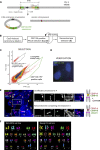
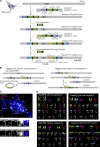
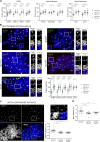
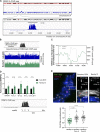
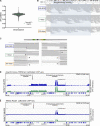

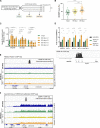
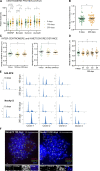
Comment in
-
Truly epigenetic: A centromere finds a "neo" home.J Cell Biol. 2021 Mar 1;220(3):e202101027. doi: 10.1083/jcb.202101027. J Cell Biol. 2021. PMID: 33566070 Free PMC article.
Similar articles
-
Chromosome engineering allows the efficient isolation of vertebrate neocentromeres.Dev Cell. 2013 Mar 25;24(6):635-48. doi: 10.1016/j.devcel.2013.02.009. Epub 2013 Mar 14. Dev Cell. 2013. PMID: 23499358 Free PMC article.
-
LINE retrotransposon RNA is an essential structural and functional epigenetic component of a core neocentromeric chromatin.PLoS Genet. 2009 Jan;5(1):e1000354. doi: 10.1371/journal.pgen.1000354. Epub 2009 Jan 30. PLoS Genet. 2009. PMID: 19180186 Free PMC article.
-
Ectopic centromere nucleation by CENP--a in fission yeast.Genetics. 2014 Dec;198(4):1433-46. doi: 10.1534/genetics.114.171173. Epub 2014 Oct 7. Genetics. 2014. PMID: 25298518 Free PMC article.
-
Genomic and Epigenetic Foundations of Neocentromere Formation.Annu Rev Genet. 2021 Nov 23;55:331-348. doi: 10.1146/annurev-genet-071719-020924. Epub 2021 Sep 8. Annu Rev Genet. 2021. PMID: 34496611 Review.
-
Centromere identity: a challenge to be faced.Mol Genet Genomics. 2010 Aug;284(2):75-94. doi: 10.1007/s00438-010-0553-4. Epub 2010 Jun 29. Mol Genet Genomics. 2010. PMID: 20585957 Review.
Cited by
-
Truly epigenetic: A centromere finds a "neo" home.J Cell Biol. 2021 Mar 1;220(3):e202101027. doi: 10.1083/jcb.202101027. J Cell Biol. 2021. PMID: 33566070 Free PMC article.
-
Variation and Evolution of Human Centromeres: A Field Guide and Perspective.Annu Rev Genet. 2021 Nov 23;55:583-602. doi: 10.1146/annurev-genet-071719-020519. Annu Rev Genet. 2021. PMID: 34813350 Free PMC article. Review.
-
Epigenetic control of centromere: what can we learn from neocentromere?Genes Genomics. 2022 Mar;44(3):317-325. doi: 10.1007/s13258-021-01193-x. Epub 2021 Nov 29. Genes Genomics. 2022. PMID: 34843088 Review.
-
Epigenetic inheritance and boundary maintenance at human centromeres.Curr Opin Struct Biol. 2023 Oct;82:102694. doi: 10.1016/j.sbi.2023.102694. Epub 2023 Aug 30. Curr Opin Struct Biol. 2023. PMID: 37657353 Free PMC article. Review.
-
Bridging the gap: unravelling plant centromeres in the telomere-to-telomere era.New Phytol. 2024 Dec;244(6):2143-2149. doi: 10.1111/nph.20149. Epub 2024 Sep 27. New Phytol. 2024. PMID: 39329317 Free PMC article. Review.
References
Publication types
MeSH terms
Substances
Grants and funding
LinkOut - more resources
Full Text Sources
Other Literature Sources
Molecular Biology Databases
Research Materials

